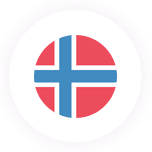Old Norse names are steeped in vast mythological and historical significance for people of Scandinavian descent. But first, let’s discuss the difference between the terms Nordic and Scandinavian. Many people use these terms interchangeably and in fact the difference is really both geographically and linguistically small from many perspectives. Linguistically the countries of Sweden, Denmark and Norway are ancient territories of the Norsemen. Geographically speaking, Finland is also a country on the Scandinavian Peninsula but quite different linguistically. And then there’s Iceland which became a Norse territory starting in the late 9th century. From a European political, economical and cultural perspective, kingdoms were generally restricted to Sweden, Norway and Denmark (wherein Finland lied with Sweden and Iceland with Norway and Denmark). Let us not forget Greenland which is also at least half Scandinavian. So basically, Nordic people are Scandinavians and vice-versa. For the purposes of this baby naming website, we use the term Nordic to cover the origins of these people descended from the “northmen” or Norsemen, although we’d be remiss not to acknowledge that naming practices vary greatly country to country.
What’s fascinating about the Nordic people (outside of Finland) is that a large portion of Old Norse names have persisted into modern times (rivaling Celtic or Gaelic names in Ireland/Scotland). Pride is alive and strong way up there in the Northern Hemisphere. Names like Sigurðr (guardian of victory); Gunnar (brave and bold warrior); Guðrún (god’s secret lore) come from Norse mythology. Other elements of these North Germanic languages have shown up in names like Björn (bear); Sigr (victory); or úlfr (wolf). The Nordic people developed a set of narratives in ancient times which, like all mythologies, helped to explain the world around them. Norse mythology is reflective of these North Germanic tribal people and the elements in which they lived. They also had a keen imagination, as Norse mythology is full of not only mighty and fearsome gods, but also of giants, trolls, elves and dwarfs. The ancient Norsemen were warriors, they were a no-holds-barred tribe who didn’t lack the courage to explore, invade, raid and occupy new lands. In fact, the Viking Age is the period of time in medieval history covering about four hundred years (8th to 11th centuries) when the Scandinavians expanded their influence either through provoked warfare or peaceful trade. They made their way to the British Isles, to continental Europe, east toward Constantinople and west to Iceland, Greenland and even Newfoundland in North America way before anyone heard the name Christopher Columbus. Um, yah. We think it’s safe to say that people of Nordic descent are made of some pretty hearty and robust stock.
The Nordic/Scandinavian naming practices also share two other features with Europe in general. The first is the influence of Christianity and the second is the impact of the monarchies. Common Christian names would include Johan (John), Anders (Andrew) and Christian for boys. For girls, popular names include Maja (Mary), Greta (Margaret), Lisbeth (Elizabeth) and Annika (Anna) for girls. Like most European countries, names of various monarchs impacted the usage and popularity of names: Erik, Gustav, Frederik, Margrethe and even more ancient ones like Knut and Olav.
Originating as a North Germanic tribe, the Nordic people also have many first names of Germanic origin in their panoply of name choices such as William, Oliver, Hugo, Alice, Wilma and Ingrid. The Scandinavians also borrowed from the Celtic people since there was a lot of co-mingling and fighting among these two groups for centuries. In fact, the patron saint of Sweden is none other than the Irish Saint Birgitta. Although the names among these Swedes, Danes and Norwegians bear little differences, the same cannot be said for the Finns. Unlike Swedish, Danish, German, etc. which are Indo-European languages, Finnish is not related at all. In fact, it’s not even Slavic; it’s distantly related to Hungarian. Many of the names used in Finland are indeed derived and/or borrowed from Sweden, but at least half of them are quite different than anything you’d recognize.

